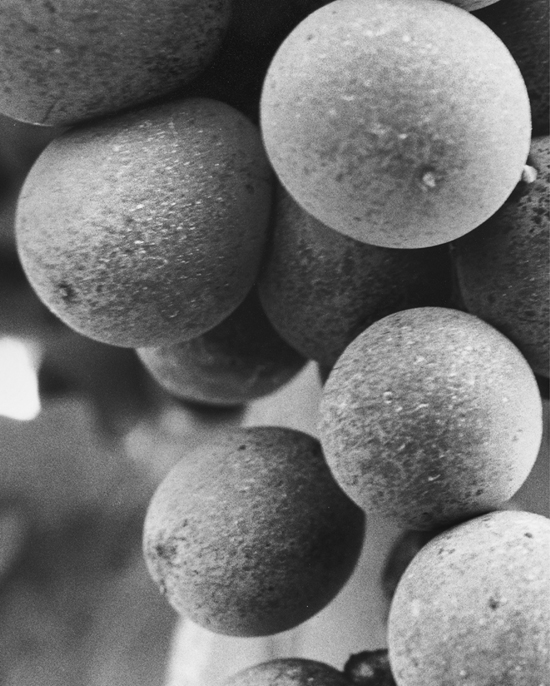![]()
Vino Italiano is divided into three parts. The first section covers the basics of Italian wine history, law, and labeling. It is intended as an overview, or orientation, particularly for newcomers to the subject. Much of the vocabulary of Italian wine is spelled out in these introductory sections.
The second part explores each of Italy’s twenty-one regions, all of which produce wine. This regional tour begins in the extreme northeast of Italy in Friuli–Venezia Giulia, travels westward across the north, then ambles down the peninsula and finally out to the islands of Sicily and Sardinia. In two instances, two regions have been combined in one chapter: Trentino and Alto Adige, which were politically linked in 1948, are treated in a single chapter, though their differences are outlined. Abruzzo and Molise are also combined—mainly because Molise has little commercial wine production (too little to merit a chapter of its own). So although there are a total of twenty-one discrete regions of Italy, there are nineteen regional chapters here.
Each regional chapter begins with a short anecdote about the region, drawn from our personal experiences in Italy, as a means of introducing the place behind the wines. These anecdotes are followed by an overview of the region’s wines, broken into as many as four style categories: sparkling wines, white wines, red wines, and sweet wines. In those regions with significant sparkling-wine production, spark-ling wines come first in the order. Other-wise, sparklers are combined with sweet wines at the end of the chapter. If a region does not produce any significant quantity of a particular category of wine, then the section is omitted entirely. This is not an Italian wine encyclopedia—we haven’t mentioned every single insignificant wine. Rather, this is a survey of the most important wines and winemakers in each region.
The third section of the book is comprised of reference material. It includes a glossary of Italian wine terms that appear throughout the text. There’s also an annotated listing of the hundreds of grape varieties grown in Italy, as well as a listing of Italy’s more than three hundred official wine “appellations,” known as Denominazioni di Origine Controllata (e Garantita), or DOC(G)s. Finally, there’s a producer directory that might be used as a shopping guide. Although some of the producers will be harder to find than others, all of those listed in the back of this book export at least some wine to the United States.
Within the regional chapters, the following elements merit brief explanation:
Throughout the text, the names of Italian wine production zones, or DOCs, are capitalized—for example, Chianti Classico. Grape names, such as sangiovese, are not capitalized, unless the grape name also happens to be a part of the DOC name, as it is in many cases (Verdicchio dei Castelli di Jesi, for instance). Additionally, countless Italian wines are labeled not only with grape or place names but also with vineyard designations or proprietary “fantasy” names, such as “Vigneto Cannubi” or “Cepparello.” These proprietary names are set off in quotation marks, as they are here.
The maps in the regional chapters are obviously not designed to be used for traveling. They are included to help provide a sense of place, and to indicate approximately where the various wine production zones (DOCs) are located within the region in question.
Wherever possible (or necessary), information is included in each chapter about exceptional vintages in the recent history of that region—from 1980 to 2004. This information was culled from the people who know best: the winemakers themselves.
This book is not a travel guide (there are plenty of excellent books for that, many of which are included in the Bibliography). However, we have tried to point out a few wine-related destinations in each region, most especially regional and local enoteche (wine bars) where you can sample wines from that region. Generally speaking, Italian wineries are not well equipped with visitor facilities (as they are in California, for example), although in certain regions, such as Tuscany, Piedmont, and the Alto Adige, there are a significant number of wineries open to visitors. The travel tips in the regional chapters focus on restaurants, shops, tours, and other things to do in wine country.
Each regional chapter contains a series of wine flights, accompanied by some commentary about the wines. The intent of these tastings is for the reader to seek out the wines recommended and taste the wines side by side, using the notes as a reference point. The wines chosen for these tastings are all available in the United States and while it would be impossible to state their exact prices (which will vary from market to market and even store to store), we’ve indicated for each wine a price category in which it will fall, based on an educated estimate provided by the wine’s importer: One dollar sign ($) means the wine costs less than $20 a bottle at retail; two dollar signs ($$) means the wine costs $20 to $40 a bottle; and three dollar signs ($$$) means the wine costs more than $40 a bottle.
Unless otherwise noted, all of the wines mentioned in these pages—and especially those included in the guided tastings—are available in the American market, albeit in varying quantities. As with any imported food product, the distribution of Italian wines is highly variable. Every effort has been made to suggest wines that are readily available nationally, but in some cases finding the wines herein might require a phone call to a trusted local retailer, or maybe a little time spent on the Internet.
What is Italian wine without Italian food to go with it? Each regional chapter contains a short commentary about the food culture of the region, followed by an original recipe by either Mario Batali or Lidia Bastianich. The premise of these recipes is to demonstrate how regional Italian wines are best showcased accompanying the regional food products that grow (or are made) alongside them.
